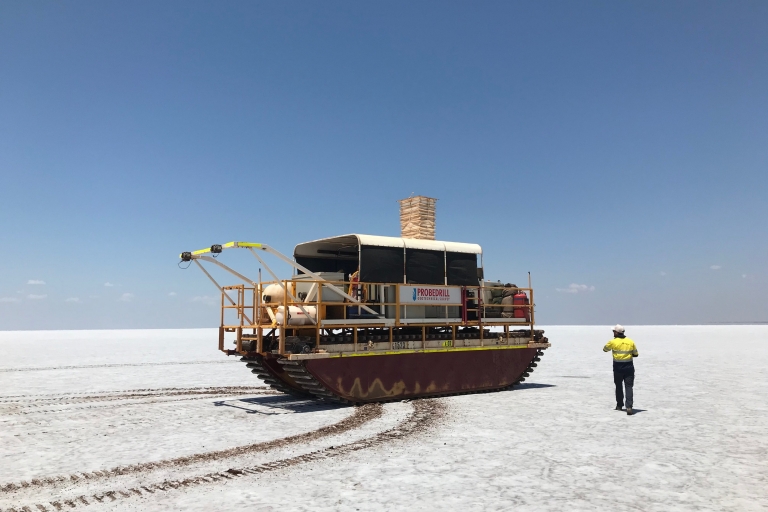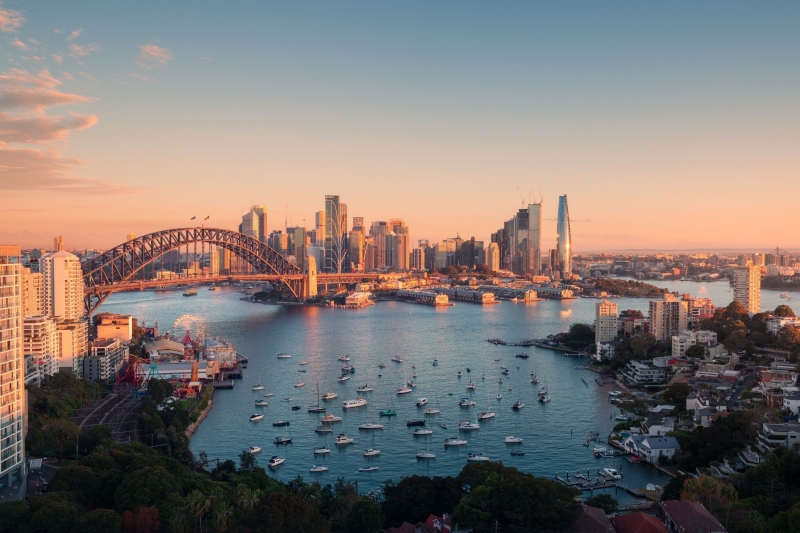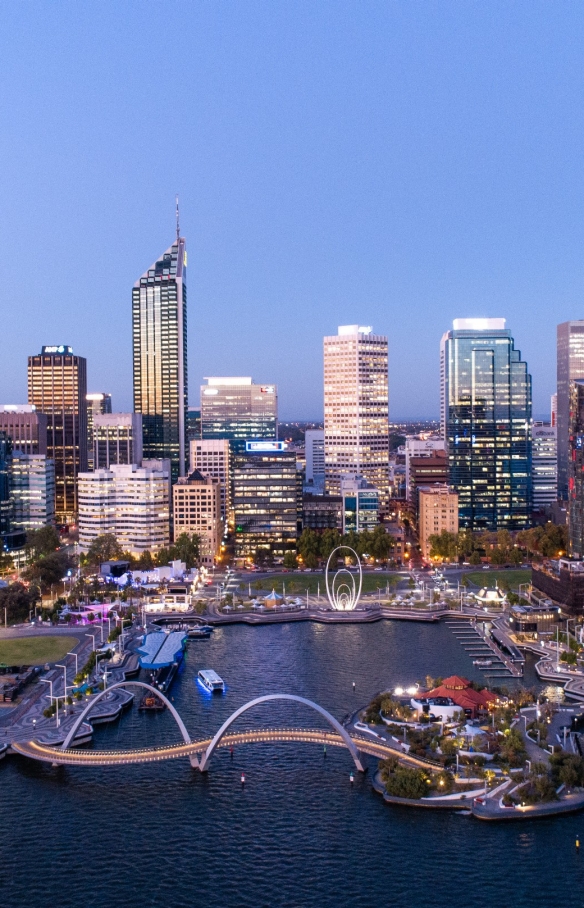
Exporting the world’s most environmentally friendly fertiliser from Australia
A young minerals company in Western Australia is set to establish the second largest Sulphate of Potash mine (SOP) in the world over the next few years, with the project to have the lowest carbon footprint for a mine of its kind globally.
Sulphate of Potash (SOP) is a premium grade fertiliser used for chloride-sensitive crops, including fruits, vegetables and tree nuts. There is currently a worldwide shortage of SOP.
Of the global market, SOP made up just under 10 percent of the 71 million tonnes of fertiliser produced in 2019, with the balance being Muriate of Potash (MOP), a cheaper, chloride heavy fertiliser, which increases the level of salt in the soil where it’s used. Both MOP and SOP help increase crop yields, in turn helping to reduce food poverty and global hunger.

Amphibious excavator digging a trial trench in the salt lake for pump testing © Agrimin
The world’s largest brine-hosted SOP resource
Agrimin, headed up by Mark Savich, is as little as a year away from starting construction on a SOP mine site at Lake Mackay in Western Australia. It’s Australia’s largest salt lake and the largest known deposit of brine-hosted SOP in the world. The site will include an A$270 million processing plant and enough wind and solar renewable energy infrastructure to generate 75 percent of the plant’s power needs as soon as production begins – likely to be in late 2024 or early 2025.
Production of brine-hosted SOP is also the most cost effective and environmentally sensitive form of the fertiliser. The more common Mannheim process centres on the reaction of potassium chloride and sulphuric acid, which requires furnaces heated to 600oC and generates hydrochloric acid as a by-product. Agrimin’s site is forecast to be the lowest cost SOP mine in the world.
The Lake Mackay SOP project will use on-lake evaporating pools to extract the potassium salts needed to produce the fertiliser, making its manufacturing process unique.
“We also want to do it in an organic way so that we can have certification on the fertiliser so it can be used in organic farming because that’s a big growth area,” says Savich.

Mark Savich and Tom Lyons with the Traditional Owners from the Kiwirrkurra community © Agrimin
A considered process
Agrimin’s SOP site has been a long time in the making. Savich acquired the mining tenements over Lake Mackay from another Western Australian mining company in 2014 and in 2021 the company signed its first major off take agreement with Sinochem Fertilizer Macao Limited in China for a third of its total 450 tonnes per annum production target.
“We've spent over A$50 million now, in that seven-year period,” says Savich.
“It's been a lot of money, a lot of time to build up our learning. And, you know, we never, never took the approach to be the first or the fastest through this whole process.
“So, it's been a low risk, long time path through all these phases of feasibility work, but it's been the right approach, I think, when it's a new industry.”
Agrimin’s development time has been well spent, building a relationship with the Indigenous traditional owners of the lake and signing a landmark native title agreement in 2017 to allow the project to proceed, as well as planning a comprehensive logistics chain, which will be controlled end-to-end by Agrimin to maximise efficiency whilst minimising cost and ensuring the haulage part of the project is – like the mine itself – as environmentally sustainable as possible, throughout the life of the mine.
“Not many junior companies embark on the whole logistics chain of a project as well,” says Savich.
The logistics operation will involve 25 high tech road train trucks, worth A$1 million each and a 940 kilometre/584-mile sealed road through the Gibson Desert and the famous Kimberley region, which Agrimin will build, to transport the processed SOP from the most remote mine site in Australia to a port on the far north of the Western Australian coast at Wyndham.
Savich says it’s the anticipated 40-year lifespan of the mine which is allowing Agrimin to take a different approach to the construction and operation of their site, from large-scale renewable energy generation to building the processing plant to maximise production during sunshine hours and investing in the logistics chain.
“Things like wind turbines and solar panels – this makes sense for a 40-year project because you can spread that infrastructure cost over that long life.”

Perth, Western Australia © Tourism Australia
Innovation driven by people
Savich says Western Australia is the Silicon Valley of mining.
“Everyone lives and breathes it over here.
“You get in a taxi and the taxi driver will give you tips about mining shares.”
Savich is a case in point – originally an accountant, he quickly found himself working as a resources analyst following mining stocks for a stockbroking firm. It was here that he began to explore the potential of Western Australia’s salt lakes and where he met geologist Tom Lyons, who joined Agrimin as its General Manager back in 2014.
And because SOP is extracted from water rather than rock, as is more common in the mining industry, Lyons has built up unique expertise.
“Now he’s [a] critical person, [not] just…for Agrimin but for the whole industry,” says Savich.
Savich believes it’s the people in Western Australia that breed the state’s incredible mining success.
“It’s that sort of entrepreneurial type feeling that people just go and have a crack, like we did on Lake Mackay, because you can, because you feel like you’ve got support of all the people around you, like engineers, financiers and government.
“There’s everything around you that can help you be successful.”
Published: 3 March 2022
















